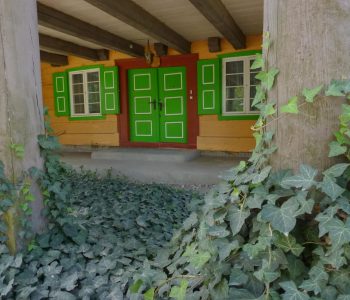His name was Paul Nipkow and he was born in 1860 in Lębork, in a tenement located at Młynarska Street, in the place of the present day Lębork museum. As a very young man, while attending a middle school in Wejherowo, he begun working on the construction of a device which would allow the long-distance transmission of images converted to electrical impulses. It was long before even the notion of television was born. Nipkow called the device he was working on an “electric telescope”. In his search for the methods of realising his dream, he stumbled upon physics department in the Berlin university, where he graduated without interrupting the work on his invention. As often happens, while trying to construct his “telescope”, he invented a few other devices, which he then patented as a railroad worker. Following many years of trials and experiments, he finally constructed a device now commonly known as the “Nipkow disc”, also called “mechanical television”.
The Nipkow disc – a rotating disc with perforations with light passing through them- facilitates simple image analysis and its conversion into an electrical signal, which, after cable transmission, may be assembled into an image hundreds of kilometres away. In the early 1920’s, this invention facilitated the construction of prototypical devices that became the foundation of television, and were used until substituted with electronic solutions.
The beginnings of television, a phenomenon of huge impact on civilisation, are mainly associated with Scotland (John Logie Baird), where the first moving images using the electronic solutions were developed, and the United States, where the devices for its broadcast and reception were constructed, improved and commercialised. Still, the fact that nowadays, in virtually every home, like a fireside many years ago, there is a TV set, can be largely attributed to a citisen of Lębork, Paul Nipkow.














